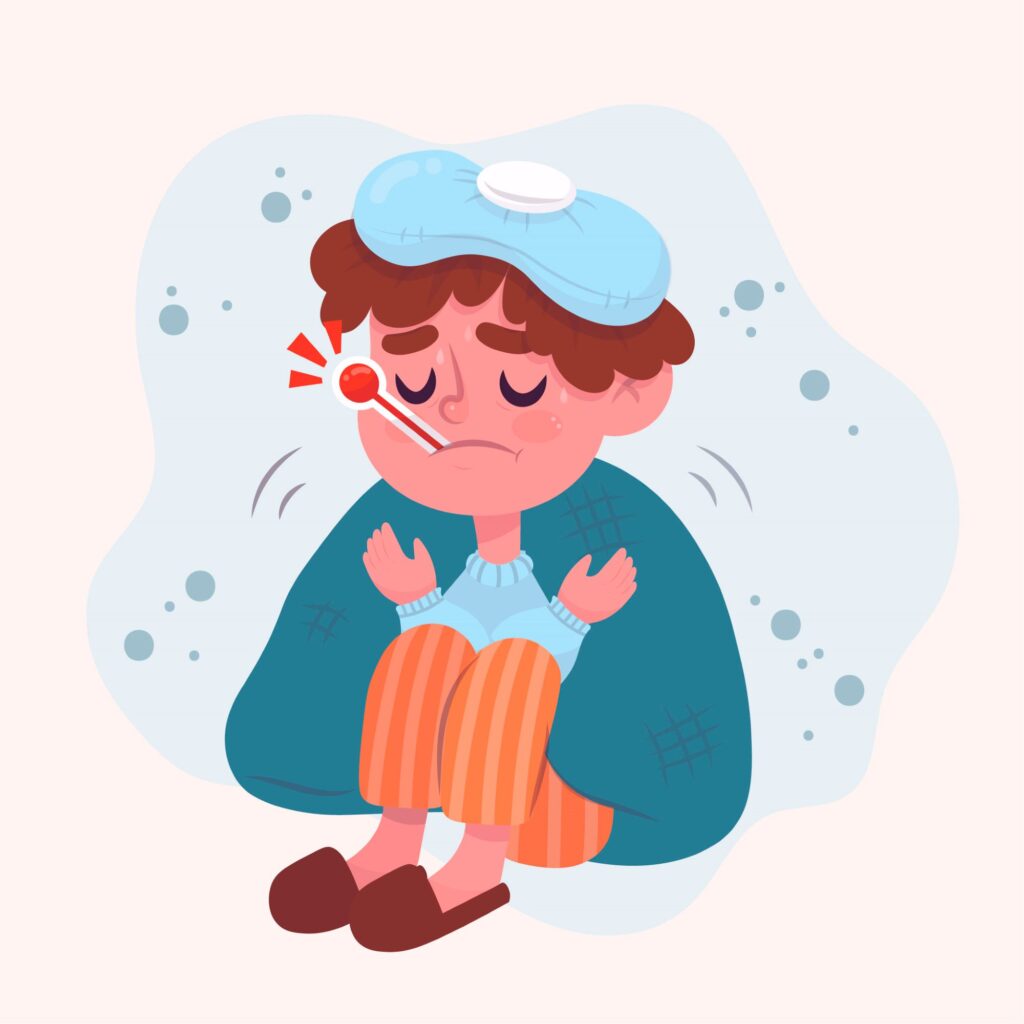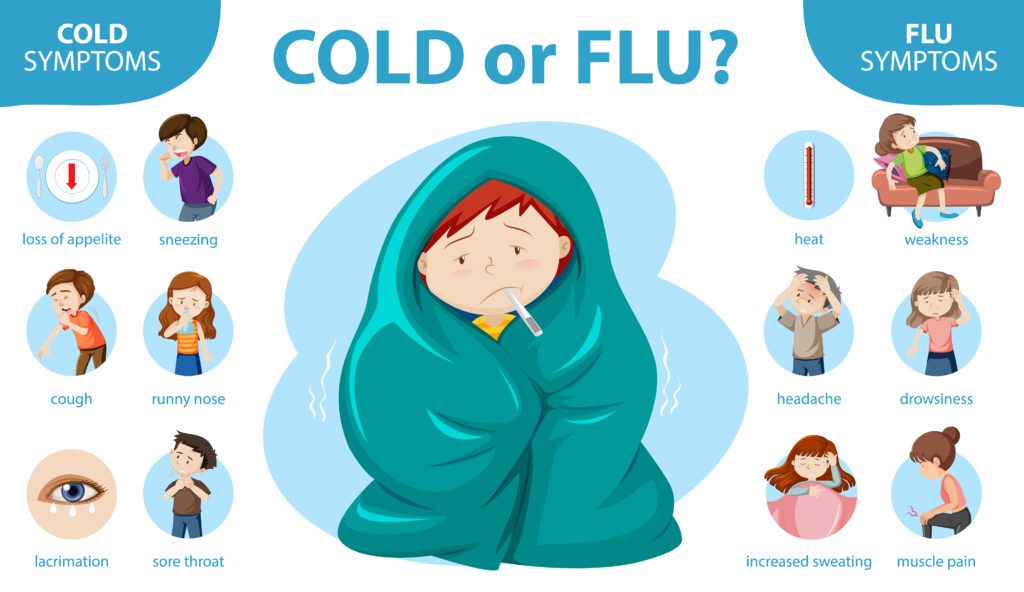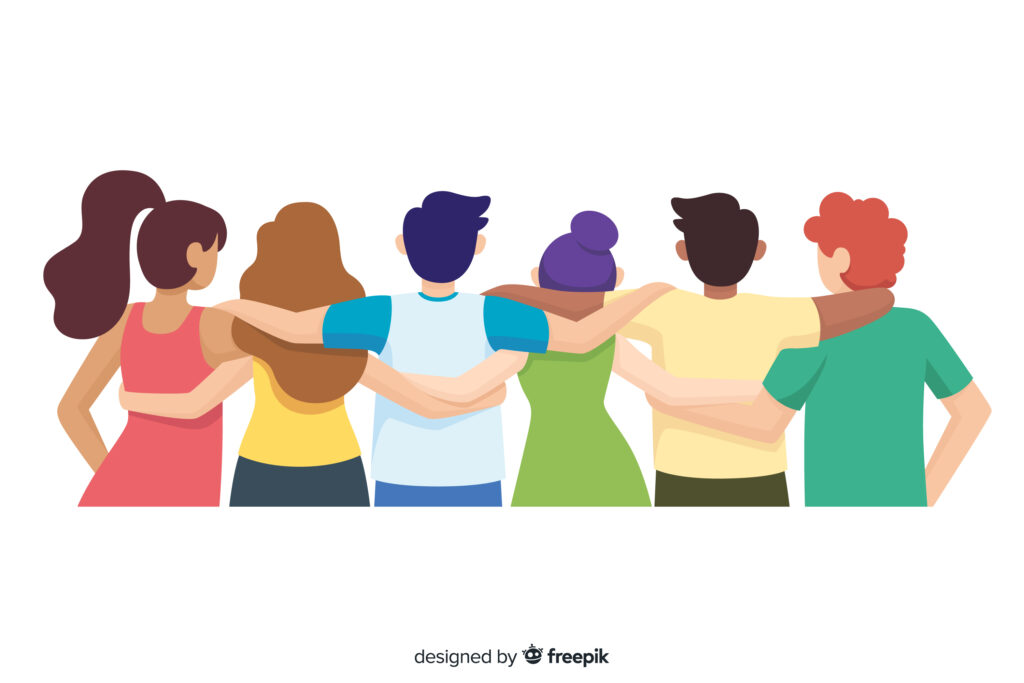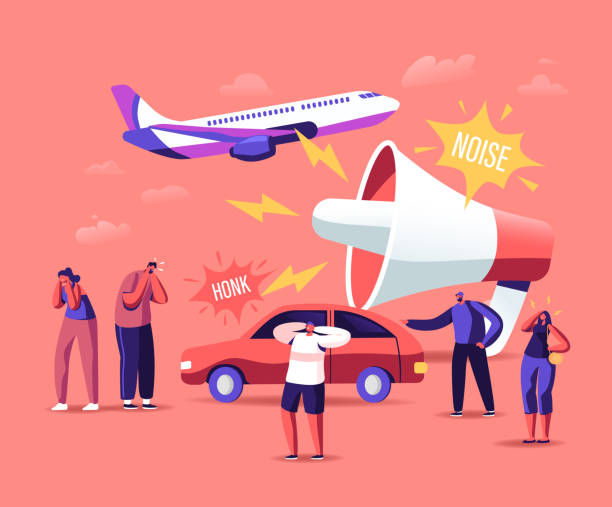Why is everyone sick around winter time?
January 12th, 2024 by Angela Perrilliat“Put your jacket on or else you’ll get the flu”, “stay off air streams or else you’ll get a cold”, do you remember your parents ever saying that to you as a kid? I do! Or how about now, after what we went through with covid, being paranoid of every sneeze and cough you hear? I am! Have you noticed that for the past month almost everyone around you is sick every other day and it doesn’t seem to go away? Well, it’s not a new bug, it’s just the winter season (and.. a little bit of lack of precaution, our bodies forgetting how to fight more common illnesses and back-to-back infections).
Some respiratory illnesses actually are more common during the winter but it is not because of the weather itself but because we spend more time indoors and with closed windows, which allows bacteria and viruses to pass easily from person to person. Also, if you already have a virus, lower body temperature makes it harder for you to fight it.
Some of these common illnesses during colder months are whooping cough, pneumonia, bronchitis (acute and chronic), respiratory syncytial virus (RSV), flu and common cold. Most of them have the same symptoms at the beginning, so what you have to check out for is how it develops and if you start to experience more severe symptoms.
Now, symptoms that go away and then reappear could be part of the same viral infection, so that mixed with a cold environment, could make it seem like several respiratory infections immediately one after the other, but it’s really just one that seems to never end.
Here’s a quick guide for you to distinguish between the different types of illnesses and their key symptoms:
| Illness | Key symptoms |
| Whooping cough Starts as common cold | Coughing spells that end with a whooping sound Watery eyes mixed with runny nose and sneezing |
| Pneumonia | Stabbing chest pain Cough with mucus Accelerated breathing and pulse Shortness of breath |
| Bronchitis | Acute: Non-stop coughing Headache Wheezing Sore throat Chronic: Persistent cough Chest discomfort Difficulty breathing |
| Respiratory Syncytial Virus (RSV) Most likely on children, older people, people with heart, lung or immune system problems | Decreased appetite Low fever Similar to a cold |
| Flu | Exhaustion High fever Body ache Sore throat Vomit or diarrhea |
| Common cold | Scratchy throat Low fever Chills and aches Runny nose |
For a complete list of symptoms, how we get each illness, how long it should last and when it is safe to get back to our workplaces/schools/social gatherings etc., read here.
Should we bring back masks and stay home when feeling sick?
By the beginning of last year almost everyone stopped wearing masks and forgot to take precautions in case of running into sick people, but we should reconsider bringing masks back since respiratory illnesses can become much worse in a matter of days during winter time. Wearing a mask not only prevents us from spreading viruses, it also stops chilly air from getting through our nose and lungs.
Having respiratory issues is really a nightmare: you don’t sleep very well or don’t sleep at all, you can’t breathe correctly, sore throat makes it so painful to even pass food and saliva and we feel too tired to even take care of ourselves. We all know that feeling. Add to the fact that it can take 15 days to clear a common cold, and 25 days for a cough to go away in most cases. Adults can also have what doctors call a post-viral cough that can last for three weeks or more after other symptoms disappear. Knowing this, I think we can all agree that we should be more cautious and avoid spending up to a month sick, even if we won’t be contagious after the first week of symptoms.
Lastly, if it is within your possibilities, make sure you are up to date on covid and flu shots. Influenza vaccination campaigns usually take place in October or November since it is best to get vaccinated before the influenza season starts.
New Provider Network in 2023
November 8th, 2023 by Lia MalconEffective November 6th 2023 the provider network for the ISI Protect Plan is due to change from the Multiplan PPO Network to the United Healthcare Global PPO network.
This will be a welcome move since the UHC Global PPO network will provide wider access to participating providers.
Please keep in mind that all policies purchased before November 6th, 2023 will continue to utilize the Multiplan PPO Network.
Benefits of United Healthcare Global PPO Network:
~One of the largest networks in the US
~1.3 million Physicians and Care Professionals
~6,500 hospitals nationwide
The new link to search for providers is: UHC Global PPO Network
Please let us know if you have any questions about these changes, we are happy to help!
Thank you for your understanding and please don’t hesitate to reach out to us with any questions!
Introducing the World Elite plan to ISI
November 1st, 2023 by Alexis Ponce
ISI is excited to announce that we’ve expanded our insurance options to cater to all different types of health insurance requirements and now, we will be introducing the World Elite plan, which is ACA-compliant and available for purchase for international students at select universities! The plan is available in three levels: World Elite Plus, World Elite 250, and World Elite 450.

Benefits include:
- Unlimited lifetime maximum
- Deductible options: $0, $250 and $450
- 100% coverage for wellness and preventative care
- Maternity, the same as any other condition
- Pre-existing conditions
- School sports, the same as any other condition
- Emergency medical evacuation and repatriation of remains
The plan uses the optional UnitedHealthcare Global Network allowing students to choose their doctors, hospitals, and clinics. Additionally, the plan uses the Optum Rx pharmacy network so students don’t have to pay first to get reimbursed. Whenever students visit an in-network provider, the doctor, hospital, clinic or pharmacy will directly bill the insurance company for the service
Since this plan will only be available for specific universities, we recommend that you visit our School Requirements section to learn more about which plan will work for your college or university!If you’re unsure about what plan option is suitable for your specific needs, please contact our customer service team. Our licensed insurance agents are more than happy to guide you with your insurance questions and concerns.
Can friendships impact our health?
November 1st, 2023 by Maria CaballeroWe are pretty much familiar with the word “friend”. A friend is usually the one you met for the first time at school or with whom you established a relationship simply by living in the building next door.
Welcoming a friend into our lives should bring us joy and happiness, but a friendship goes much further than having a confidant with whom you can rely on, take photos or even travel with. According to several studies, friends not only contribute to improving our social life, but they can also help us in multiple ways. How is this possible? Studies have shown that friendships can bring different benefits to our mental health, let’s take a look at some of them:
Reduce stress
According to a study carried out by a recognized university in Canada, secreting oxytocin during a pleasant moment such as a dinner or a conversation causes us to experience relief and well-being.
Friends will always have your back in case you need to talk to somebody or just want to take a break from work or daily life responsibilities, because most of the time they are the ones who come to our rescue when we are feeling stressed out due to personal and/or family issues.
Improve your self-confidence
Friends can help us see situations from a different perspective, they can give us sincere and accurate advice that can impact our way of thinking or even notice details and/or options that we had not considered previously.
There are several psychological studies that affirm that friendships always strengthen trust and raise self-esteem because it favors communication and helps personal development.
Helps to deal with health problems
Unfortunately, no one is exempt from getting ill, and that usually deteriorates our body and our mental health at the same time. Psychological studies have shown that social support is important and can have a positive effect when fighting an illness, in addition to that, friends can help make it more bearable and can even speed up our recovery.
They will make you a better person
Friends are always there to bring out the best in us, they always push us to be better. If you don’t feel good about yourself or you’re having troubles with something, send a message or give your friends a call, because they can help you get through difficult times.
According to a study, it is the same friends who motivate you to look for an eating plan to maintain a healthy relationship with food or who always invite you to practice sports and/or outdoor activities that involve the physical movement of your body.
Our friends are our antidepressants
It is proven that friendship can mitigate the symptoms of disorders such as anxiety and depression, a conclusion that is also corroborated by psychologist Pedro Agustín Garzón: “People who are alone, who do not live with others, do not relate, that is, they have low social interaction, live less and may have greater psychological difficulties.”
A stronger heart
In addition to exercising, identifying risk factors and having a healthy diet, a good friend also protects our cardiovascular health.This is demonstrated by a study carried out by Duke University (United States), which concluded that 50% of adults who had died from cardiovascular problems did not have close friends, while 85% of survivors had long term friendships.
Now that you know some of the physical and psychological benefits of friendship, share with us in the comments who your best friend is and send them a message to let them know how important they are to you.
References:
https://www.vidaysalud.com/el-poder-de-los-amigos-y-su-efecto-en-tu-salud/
Why should I get my vision tested?
September 29th, 2023 by Joss JimenezSight is one of our most precious senses and it is important to make sure our sight is sharp and healthy. One way to take care of it is to have regular sight tests.
Sight tests are essential for detecting and monitoring a variety of eye conditions, including:
- Refractive errors. These are the most common eye problems, and they include short-sightedness (myopia), long-sightedness (hyperopia), and astigmatism. Refractive errors can be corrected with glasses, contact lenses, or surgery.
- Eye diseases, such as glaucoma, cataracts, and macular degeneration. These diseases can lead to serious sight loss if not treated early.
- Other health conditions, such as diabetes and high blood pressure.
How often should you get tested for eye acuity?
Most adults should get tested for eye acuity every two years. However, you may need to get tested more often if you have any of the following risk factors:
- Over the age of 40
- Have a family history of eye diseases
- Have diabetes or high blood pressure
- Take certain medications that can affect your vision
- Have experienced any changes in your vision
What happens during a sight acuity test?
During an eye acuity test, you will be asked to sit in front of a chart with letters or symbols of different sizes. You will then be asked to cover one eye and read the smallest letters or symbols that you can see with the other eye. The process will then be repeated with the other eye.
Your eye doctor will use the results of your eye acuity test to determine your prescription for glasses or contact lenses, if necessary. They will also use the results to monitor your vision over time and detect any changes.
Most student plans do not include coverage for sight acuity tests, eyeglasses, or contact lens prescriptions. That is why we have made a plan available that you can use if you want to have supplementary vision coverage while you are residing in the U.S.
The Ameritas Vision plan includes the following benefits:
- Annual eye exam
- Coverage for eyeglass lenses and frames
- Coverage for contact lenses
- Lens options and coatings including anti-reflective and UV protection
- Lenses coverage include single vision, bifocals, trifocals, and lenticular
You can review the plan and apply for it here: https://www.internationalstudentinsurance.com/dental-vision-insurance/
Making sure your sight is healthy is fundamental for your daily life activities and you would want to have the right coverage if you are looking to get eyeglasses or contact lenses. Our customer service team can always be contacted if you have any questions.
FDA-approved over-the-counter birth control pill
August 17th, 2023 by Leslie ReynoldsThe FDA Approved an Over-the-Counter Birth Control Pill!
What does that mean for international students?
Recently, the United States Food and Drug Administration (FDA) authorized the US’s first “over-the-counter” birth control pill called “Opill.” “Over-the-counter” refers to medications that can be purchased at a pharmacy without a prescription from a doctor. THIS IS BIG NEWS! Keep reading to learn why.
Prior to this authorization, in order for someone to obtain a prescription for birth control, they would typically have had to take the following steps:
- Find a primary care doctor or gynecologist doctor (preferably in-network)
- Schedule and attend an appointment with this doctor
- Receive a prescription from the doctor for birth control
- Wait until the prescription had been filled at the pharmacy you selected
- Pick up the prescription from the pharmacy, and pay for it.
Since birth control is considered preventative medication, and an appointment to get this medication would also fall under the preventive or wellness category, many international student insurance plans would not have covered this doctor visit. In addition, they also might not cover the cost of the preventative prescription medication.
However, with this new authorization, these are the steps someone would need to take in order to obtain the Opill birth control pill:
- Go to a nearby pharmacy (since it’s new, you may want to call ahead to make sure they have the authorized medication)
- Pick up and pay for the medication.
A price hasn’t been announced for the Opill yet, but HRA Pharma, the pill’s manufacturer, is receiving a lot of pressure from various entities to make sure the medication is affordable without insurance coverage (since most insurance plans don’t cover or discount over-the-counter medications). They anticipate announcing a price in the coming months, with the Opill being available in early 2024.
However, currently there are twelve states, plus Washington, DC, that do require insurance companies to cover over-the-counter contraceptives. You can see the list of states here, and always double check your insurance policy to understand your benefits. You can also call our customer service if you ever have questions about how your plan works!
Another important thing to note about this new Opill is that it is a progesterone-only birth control pill. Many currently prescribed birth control pills are combination progesterone-estrogen pills, but studies have found that progesterone-only has fewer side effects and is thus safer to take independently, without the direction of a doctor.
As they say in the news, this is a developing story, so the actual details and processes of how it will all work may shift and change over the next few months. We will do our best to update you on the major announcements related to this exciting approval!
For additional reading on this topic:
Sports Insurance for International Students
July 20th, 2023 by Joss JimenezInternational students who participate in sports are at a greater risk of injury because they are constantly pushing their bodies to the limit and are more likely to be involved in accidents. If they practice sports frequently, it is important for international students to have sports insurance.
When choosing a sports insurance plan, you must consider the type of sports you will be participating in. There are four main categories of sports: organized sports, extreme/adventure sports, contact sports, and recreational, leisure, or fitness sports.
Organized Sports
Organized sports, as defined in insurance terms, usually include intercollegiate, interscholastic, intramural or club sport participation. If your sport requires organized practices or events, if you have a coach, or if you signed up for the sports through your school, it is most likely an organized sport. This definition does not include semi-professional and professional sports, which are usually in their own category, and in general are not covered by most international student or travel medical plans.
Organized sports are typically covered by international student insurance plans, but there is a maximum limit per injury. For example, the Student Secure Budget plan covers organized sports up to $3,000 per injury, while the Student Secure Select and Elite plans cover organized sports up to $5,000 per injury. You need to purchase an additional rider on this plan to get organized sports coverage. The Student Secure offers coverage for a wide variety of school-sanctioned sports, from basketball and football to rodeo and surfing.
It is important to note that not all organized sports are covered by every insurance plan. Some plans may exclude certain sports, such as contact sports or extreme sports. It is important to read the fine print of your insurance plan carefully to make sure that the sports you participate in are covered.
Extreme/Adventure Sports
Extreme sports, also known as adventure sports, are activities perceived as having a high level of inherent danger. These activities often involve speed, height, a high level of physical exertion, and, in most cases, highly specialized gear. These kinds of activities are often undertaken for thrill seeking, and thus can expose the participant to abnormal risk that exceeds even that of organized sports.
Extreme/adventure sports are not typically covered by international student insurance plans. However, there are some plans that offer limited coverage for extreme/adventure sports, or there may be an additional rider that can be added to the plan for an additional cost.
If you are planning to participate in extreme/adventure sports, it is important to carefully consider your insurance options. You may want to purchase a separate insurance policy that specifically covers these types of sports.
If you are an international student interested in practicing extreme sports, we have some options for you:
The Atlas Travel plan includes coverage for all extreme sports that are not excluded specifically in the policy. Excluded sports include base jumping, bobsleigh, cave diving, cliff jumping, mountaineering at elevations of 4,500 meters or higher, racing by any animal or motorized Vehicle or BMX and whitewater rafting. On the contrary, two of the extreme sports that the Atlas Travel plan does cover are snow skiing and snowboarding, as long as they don’t violate the authority laws and stay inbound.
The Patriot Travel plan is another example of a plan that offers an Adventure Sports rider. Sports covered under the rider are limited to the following: abseiling, BMX, bobsledding, bungee jumping, canyoning, caving, hot air ballooning, jungle zip lining, parachuting, paragliding, parascending, rappelling, skydiving, spelunking, wildlife safaris and windsurfing.
Contact Sports
Contact sports are also not typically covered by international student insurance plans. These sports involve physical contact between players, which increases the risk of injury. However, there may be an exception if the sport is sanctioned by your school.
For example, the Student Secure Budget and Select plans cover all organized sports, even if they are considered contact sports. However, if you are planning to participate in a contact sport that is not sanctioned by your school, you may want to purchase a separate insurance policy that specifically covers these types of sports.
Recreational, Leisure, or Fitness Sports
Some sports don’t fit into any of these categories. If you practice a sport to keep fit or just for fun, it would be considered into another category called Recreational, Leisure, or Fitness sports. Recreational, leisure, or fitness sports are typically covered by international student insurance plans. These sports are not considered to be as dangerous as organized sports, extreme/adventure sports, or contact sports.
However, it is important to read the fine print of your insurance plan carefully to make sure that the sports you participate in are covered. Some plans may exclude certain sports, such as sports that involve the use of motorized vehicles.
Tips for Choosing a Sports Insurance Plan
When choosing a sports insurance plan, there are a few things you should keep in mind:
- Compare different plans to find one that offers the coverage you need. Consider the types of sports you will be participating in, as well as the maximum benefit you need.
- Make sure the plan has a high enough maximum benefit to cover your potential medical expenses. If you are injured in a serious accident, you could end up with large medical bills.
- Consider whether you want a plan with a deductible or a plan with no deductible. A deductible is the amount of money you have to pay out of pocket before the insurance company will start paying for your medical expenses.
- Read the fine print carefully to understand all of the terms and conditions of the plan. This includes the exclusions, limitations, and waiting periods.
Having sports insurance can give you peace of mind knowing that you are protected in case of an injury. It is an important consideration for any international student who participates in sports.
Community Mental Health and What You Can Do to Take Action
June 6th, 2023 by Angela PerrilliatCommunity mental health is a mix of actions that have the goal of improving mental health on a community or social level, tackling health problems and their determining factors in a comprehensive way.
Taking action in building a community of mental health awareness is important because we are all responsible for taking care of and supporting each other. We may not always live and be part of a culture where institutions for mental health exist or where not all parts of the population benefit from them. Therefore, we must create these conditions instead of waiting for them to happen.
Mental Health
Mental health is a person’s emotional, psychological, and social well-being. And it has an effect on every aspect of a person’s life, including how they think, feel, and act. Also, it affects the way a person handles stress, the choices that they make, and how they relate to others. Emotional wellness is the ability to be aware of our feelings and accept them. It means having an optimistic approach through challenges and change. Being emotionally well doesn’t necessarily mean that you’re happy all the time, but rather, that you’re self-aware and able to shift as a way to feel better.
Risk and Safety Factors
There are a number of factors that can determine a person’s state of mental health, or that of a group, or even anticipate mental health disorders.Two of these are known as risk and safety factors, and both can be split into three categories:
| Risk Factors | ||
| Personal | Social | Socioeconomic |
| Examples: -Genetics and perinatal conditions -Physical health issues -Traumatic life experiences | Examples: -Lack of a support network (family, school, neighborhood or work) -Isolation (due to migration, discrimination, etc.) | Examples: -Poverty and inequity -Unemployment -Geography (where you live and your current living situation) -Education level |
| Safety Factors | ||
| Personal | Social | Socioeconomic |
| Examples: -Emotional assertiveness -Resilience -Agency and autonomy | Examples: -Stable and sufficient support network -Healthy dynamics on relationships (work, family, partners) | Examples: -Available services such as health, quality food, housing and green areas -Job opportunities |
Identifying both factors is a good first step for community mental health assessment and prevention.
You may have figured out by this point that most of the risk factors can be taken care of if a community is prepared to carry out small actions that will have a bigger role in the long run.
Take action!
Here are some ideas for concrete actions that you can start or suggest within your own community, whether it’s your school, college or university, neighborhood, family, group of friends, clubs you belong to, etc. You can even promote these actions by starting them yourself and teaching others to replicate them as well. Remember being part of the change you’d like to see is key.
Practice affection, assertive communication, breathing exercises throughout the day, meditation and other fulfilling spiritual activities. If it’s possible, get counseling and/or psychotherapy.
Create clubs for recreational activities such as arts and crafts (music, band, painting, dancing, movie club), gardening (you could learn about sustainable crops and how to plant them, or just gardening to embellish your surroundings or the city that you live in) and cultural events with topics the community might be interested in.
Create exercise groups; the options are endless: you can go for a walk or a bike ride, organize a yoga class, pilates, etc.
Look out for those in your community who might need an extra hand with their day to day activities, and volunteer so everyone can take turns when it comes to helping and contributing. These could be older generations or those with special needs, such as people living with a physical, mental or social disadvantage.
Promote awareness for having healthy surroundings. Noise is one of the most common stress factors. It makes us lack concentration, interferes with our sleep schedule, makes us become irritable and constantly nervous. Take careful consideration when playing loud music, beeping your horn, screaming, and talking loud for a long period of time, etc. Think twice and think of others!
Form groups for emotional support where you can practice emotional assertiveness and acceptance. You don’t necessarily need a professional to be there, it’s more than enough to be an active listener. Try to avoid judging and exude empathy for others.
These are some ideas you can start implementing now. If they already exist in your community, spread awareness and start incorporating them more regularly. Remember, you have agency and are capable of transforming your surroundings little by little, step by step!
How does singing help improve your health?
May 19th, 2023 by Joss JimenezSinging is a universal human activity that has been enjoyed for centuries. It is a way to express ourselves, connect with others, and simply have fun. But did you know that singing can also be good for your health?
Here are some therapeutic effects from singing:
- Reduces stress. Singing can help reduce stress by releasing endorphins, serotonin and dopamine, which are hormones that have mood-boosting effects. These hormones can help us feel less stressed, anxious or depressed; and they can also boost your overall mood.
- Improves lung function. Singing is a form of aerobic exercise that requires a specific type of deep breathing. This type of breathing -known as diaphragmatic breathing- can help improve lung function by increasing the amount of oxygen that the body gets. Diaphragmatic breathing is also useful to clear mucus from the lungs, which can be beneficial for people with respiratory conditions such as asthma and chronic obstructive pulmonary diseases (COPD). In addition to improving lung function, singing can also improve general stamina and control of breath. This is because singing requires the person singing to maintain a steady stream of air for extended periods of time. This can be helpful for people who participate in other activities that require good lung function, such as running, swimming, and playing wind instruments.
- Boosts the immune system. Singing can help boost the immune system by increasing the production of proteins that help fight diseases, such as cytokines. Cytokines are signaling molecules that help coordinate the immune response, and increase the production of white blood cells, which are the body’s main defense against infection.
- Improves social skills. Singing with others can help improve your social skills and provide a sense of community. When you sing in a group, you are forced to interact with others and work together. This can help you build communication and teamwork skills. It makes you stay connected to others and feel like you are part of something bigger than yourself.
If you’re looking for a way to improve your health, singing is a great option. It’s a fun, easy way to get exercise and enjoy the benefits of music. So grab a songbook and start singing!
Energy drinks; their ingredients and their effects on our bodies.
April 14th, 2023 by Antonio ZapataEnergy drinks are a type of non-alcoholic drink that offer us a better physical and mental performance as they provide that extra shot of energy that we sometimes need. Whether it’s for final exams season, athletic activities, or when we have an overwhelming amount of work or a hectic travel itinerary.
This extra shot of energy is mostly the result of the high concentrations of caffeine and sugar that energy drinks contain, among other ingredients that have become popular in the market of energy drinks, such as vitamins and natural ingredients like ginseng and guaraná. However, the reality is that some of these natural ingredients lack specific scientific evidence regarding their supposed properties.
In this blog, we analyze the effects of energy drinks on the body, as well as their effectiveness in relation to what they promise, and the possible risks that regular consumption of these drinks entails.
These drinks can enhance our alertness, and on a physical level, they increase blood pressure, heart rate, and respiratory rate, granting that extra shot of energy and alertness that we might need.
The most common substance in energy drinks is caffeine, which is the most consumed psychoactive substance worldwide. But the problem itself is not the caffeine, it’s the amount we consume. Depending on the brand and the size of the container, the caffeine concentration of an energy drink can vary from 80 mg to 160 mg and even more.
It is true that caffeine increases our mental performance, and when it’s consumed before practicing sports, caffeine could improve our performance and endurance during prolonged activities. However, excessive caffeine consumption can cause dehydration as it has a diuretic effect. In addition, it can also cause various problems such as changes in the sleep cycle, irritability, nervousness or anxiety. Ironically, it is also believed that in some cases, it can cause problems with retaining information or focusing.
In addition to caffeine, energy drinks may contain large amounts of sugar, which can also affect our health. It is a fact that sugar is a source of energy that the body synthesizes, but the risks of excessive sugar consumption outweigh the benefits that an energy drink could provide. It is important to note that sugar is linked to several health problems such as type-2 diabetes, overweight, and cavities.
The amount of ingredients vary depending on the brand and the size of the container, but to give you a general idea, energy drinks usually contain around 11 grams of sugar per 100ml. So, we could estimate that the amount of sugar in a 250 ml to 500 ml energy drink can range from 30 to 60 grams, which would be the equivalent of about 12 coffee spoons of sugar. Therefore, an energy drink of 500 ml would exceed the daily sugar intake that is considered safe for human consumption, according to the World Health Organization (WHO).
Nowadays, it is easy to find sugar-free alternatives, which contain sweeteners instead. While it is true that the sugar-free versions are relatively healthier and there are no known adverse effects, the research on regular consumption of sweeteners is limited. Therefore, it is not known for sure what the adverse effects of having energy drinks on a regular basis could be. Some sources infer that they could have negative effects on our intestinal microbiota.
Among the other active ingredients of energy drinks, it is normal to find taurine, which is an amino acid that can naturally be found in meat, fish, dairy products, eggs, nuts, and legumes.
Taurine has many functions such as regulating the functioning of the cardiovascular system and the central nervous system. However, the amounts of taurine found in energy drinks are much higher than what we can find naturally in food. On the other hand, the studies that have been performed on the consumption of taurine, have not shown that it actually improves physical and mental performance. Therefore, we can conclude that taurine and its energy boosting effects are marketing strategies.
As mentioned, energy drinks normally include vitamins, which are mostly of type B, such as vitamin B3 and B6. These vitamins do contribute to energy and mental performance, and reduce tiredness and fatigue. The advantage of type B vitamins is that the risk of overdose is very unlikely. If we take more than the body needs, the excess will be naturally eliminated through physiological processes.
Regarding the natural ingredients that energy drinks contain, such as ginseng and guaraná; these are considered active ingredients that produce a biological effect in our body, like caffeine does. But despite the popularity of these ingredients, the information available regarding their effectiveness in combination with all other ingredients of energy drinks is quite limited. In the long run, it could be a risk as active ingredients will cause a reaction in the body, which then could cause side effects or even negatively react with medications. For example, ginseng is contraindicated in people with heart problems, high blood pressure, and anxiety.
Guarana, on the other hand, naturally contains caffeine, which could increase the caffeine levels in an energy drink and be counterproductive if these drinks are consumed excessively.
When we consume energy drinks in excess, the cardiovascular system is the most affected as blood pressure can dangerously raise, which increases the risk of suffering a heart attack or a stroke. Excess of energy drinks could also cause irregular heart rhythm which will increase the risk of having lethal arrhythmias.
Lastly, it is important to point out the effects of these drinks if they are combined with alcohol, which is a common practice nowadays. Mixing these drinks with alcohol can be dangerous as the effects that energy drinks can have on the body and nervous system could mask the effects of alcohol, and this could lead to a higher alcohol intake. By mixing these drinks with alcohol, confusing signals are sent to the nervous system and because of this, dangerous levels of alcohol could be reached.
Having said this, we can conclude that more research is needed on the effects and possible risks of energy drinks, and the active ingredients they contain. The consumption of these drinks should be moderate and it is important to be aware of the possible risks that they imply.
Sources:
- https://www.aesan.gob.es/AECOSAN/docs/documentos/seguridad_alimentaria/evaluacion_riesgos/informes_comite/BEBIDAS_ENERGETICAS.pdf
- https://pubmed.ncbi.nlm.nih.gov/23206286/
- https://www.ahajournals.org/doi/full/10.1161/JAHA.118.011318
- https://pubmed.ncbi.nlm.nih.gov/30721958/
- https://www.ncbi.nlm.nih.gov/pmc/articles/PMC4682602/
- https://www.ncbi.nlm.nih.gov/pmc/articles/PMC8083152/

















